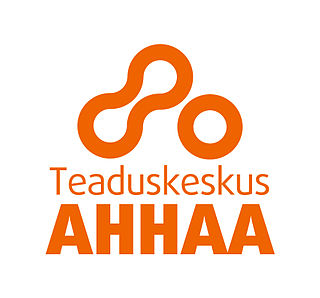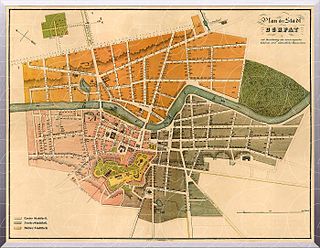
Tartu is the second largest city in Estonia after Tallinn. Tartu has a population of 97,435. It is 186 kilometres southeast of Tallinn and 245 kilometres northeast of Riga, Latvia. Tartu lies on the Emajõgi river, which connects the two largest lakes in Estonia, Lake Võrtsjärv and Lake Peipus. From the 13th century until the end of the 19th century, Tartu was known in most of the world by variants of its historical name Dorpat.

Narva is a municipality and city in Estonia. It is located in the Ida-Viru County, at the eastern extreme point of Estonia, on the west bank of the Narva river which forms the Estonia–Russia international border. With 53,626 inhabitants Narva is Estonia's third largest city after capital Tallinn and Tartu.

In local government, a city hall, town hall, civic centre, guildhall, or municipal building is the chief administrative building of a city, town, or other municipality. It usually houses the city or town council, its associated departments, and their employees. It also usually functions as the base of the mayor of a city, town, borough, county or shire, and of the executive arm of the municipality.
This article covers the architecture of Estonia.

The Estonian National Museum founded 1909 in Tartu is a museum devoted to folklorist Jakob Hurt's heritage, to Estonian ethnography and folk art. The first items for the museum were originally collected in the latter part of the 19th century.

Tartu Cathedral, earlier also known as Dorpat Cathedral, is a former Catholic church in Tartu (Dorpat), Estonia. The building is now an imposing ruin overlooking the lower town. In the small part of it that has been renovated is now located the museum of the University of Tartu, which the university also uses for major receptions.
Veronika Valk is an Estonian architect.

The Old Great Square is a medieval market square located in the city centre of Turku, Finland. It is located in the II District in very close proximity to Turku Cathedral. The area was the administrative and commercial centre of Turku since the founding of the city in the 13th century up until the Great Fire of Turku.

Karlova is a neighbourhood of Tartu, Estonia. It has a population of 8,856 and an area of 2.30 km2 (0.89 sq mi).

Science Centre AHHAA is a science centre located in Tartu, Estonia, and is currently the largest science centre in the Baltic states. AHHAA was established to promote science and technology using interactive exhibits.

Christmas Peace is a traditional Finnish event whereby a town formally announces the beginning of the Christmas season. This practice has its roots in old Swedish legislation and was established by Birger Jarl in the 13th century, building upon the Truce of God tradition. Offenders who committed crimes during the Christmas season were subjected to harsher punishments. The declaration of Christmas Peace is a symbolic and integral part of the Christmas tradition in Finland in the present day. Tradition encourages people to be respectful and peaceful at Christmas.

Rauma Old Town Hall is a building located in the UNESCO World Heritage Site of Old Rauma in Rauma, Finland.

The Great fire of Tartu took place on 6 July [O.S. 25 June] 1775 and destroyed most of the city of Tartu in what is now Estonia. The fire destroyed the centre of the city.

Tartu Art Museum is a state-owned museum of art located in Tartu, Estonia. It was founded in 1940 on a private initiative by the members of local art school Pallas. This is the largest art museum in Southern Estonia.

Narva Town Hall is a historic municipal building in the city of Narva, Estonia. The building is located on Town Hall Square next to the Narva College of the University of Tartu.
Anton Lembit Soans was an Estonian architect, urban planner and lecturer. He was one of the founding members of the Estonian Architects Union.

Raekoja plats is town square beside Tartu Town Hall in the center of the Tartu Old Town in Tartu, Estonia.

Main building of Tartu University is the main building of the University of Tartu. This building is one of the most notable examples of classical style in Estonia.

The Porvoo Town Hall is a former town hall and current museum in Porvoo, Finland. It is located in the old town of Porvoo, in the immediate vicinity of the market square.


















